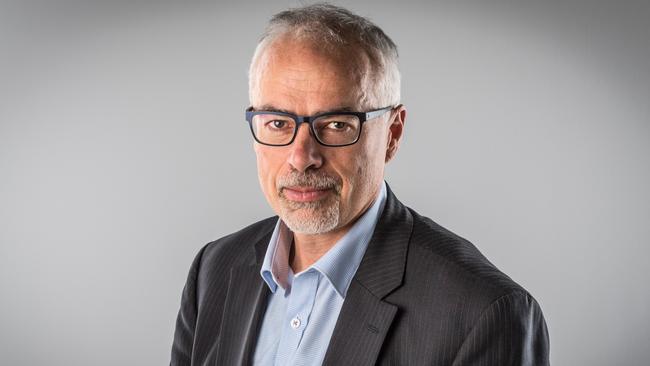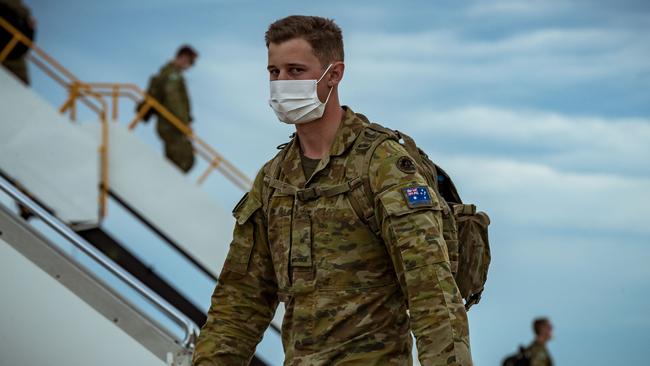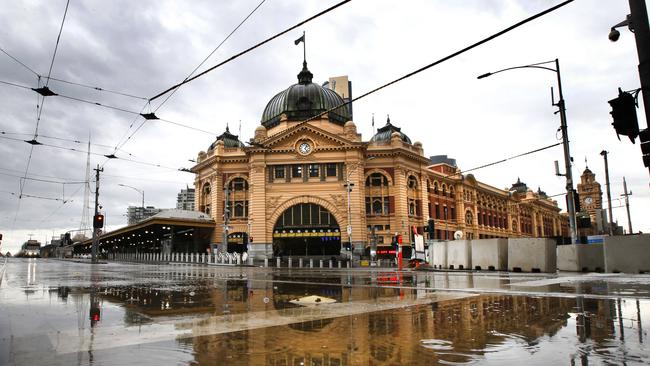Targets to ease Melbourne restrictions are ‘too tough’, says Tony Blakely
Victoria could relax the number of daily cases needed to ease restrictions without drastically increasing the risk of a third wave, says the author of the modelling used by the state government to justify the extended lockdown.

HS Coronavirus News
Don't miss out on the headlines from HS Coronavirus News. Followed categories will be added to My News.
The target to release Melbourne from stage four lockdown is “too stringent”, says an expert whose research was used by the state government to justify the stage-four extension.
University of Melbourne professorial fellow in epidemiology Tony Blakely said the target for the most substantial easing of restrictions — an average of fewer than five daily coronavirus cases across two weeks — was too tough.
“It is too stringent, in my view,’’ said Professor Blakely, who co-authored modelling Premier Daniel Andrews relied on to extend the lockdown.
Professor Blakely told the Herald Sun the road map that demands the five case average, and a maximum of five mystery cases in 14 days before curfews and stay-at-home orders are dropped, was too stringent and was not recommended in his research.
“It is too stringent, in my view,’’ he said.
“This is not the University of Melbourne view. In my view it is too stringent.’’

Prof Blakely said the decision to settle on a threshold of an average of five cases a day to trigger a move back to stage two restrictions was overly cautious.
“That’s their call, it’s not the one I would have made, but that’s their decision,” he said.
The recovery road map predicts Victoria could be in position to ease out of the harshest lockdown restrictions around October 26.
But Prof Blakely said he would have settled on an average of 10 cases a day, which would have slightly increased the risk of a third wave from three per cent to 10 per cent.
But it could have seen metropolitan Melbourne eased out of restrictions much sooner.
“I think the difference between a three per cent risk of a third wave and a 10 per cent risk is not that much really,” he said.
Prof Blakely also sought to clarify what he said was confusion following the release of the road map that the research had dictated that an extension to the lockdown should be made.
Premier Daniel Andrews cited the modelling in justifying his recovery plan, forecasting a 60 per cent chance of a pre-Christmas lockdown.

Prof Blakely said there was a misconception that the modelling dictated the policy decision.
“It’s sort of been conveyed to the public that the model ran and the model said ‘do this. That’s not what the model does,” Prof Blakely said.
“The model provides outputs, and then you look at it, and you say, OK it’s saying this, but I think we’ll take a little bit more risk than that.
“You can’t avoid a human brain at the end of it considering political risks, economic consequences, all those sorts of things.”
Prof Blakely said those factors could be accounted for in modelling, but not in the tight time frame he and his co-authors had to complete their government modelling.
He said he had no meetings with the government or chief health officer Brett Sutton to discuss the modelling ahead of the announcement.
“So there was quite a clear separation, which is a fair way of doing it, between us as providing information and the actual decision making process,” he said.
“If we had our time over again … there might have been a little bit more interchange there so that we could have explained the model a little bit better.”

He said he was “reasonably happy with how the model’s been used although it has actually made us look as though we somehow set the policy levers”.
“We didn’t do that, we provided the information for it, and I’m delighted that we could have helped out.
“We don’t put numbers into a computer and it says make this policy.
“If I could rerun the last two weeks, I think I could have assisted with the decision making. I’m not saying I could have done better, but I could have made a really good contribution.”
Deputy Chief Health Officer Allen Cheng this week defended the modelling.
But he said experts would also reassess information about Victoria’s coronavirus situation every day to build a complete picture of how the state was faring.
“Five cases a day is not an absolute hard and fast rule and the date is not a hard and fast date,” he said.
“We need to look at this every day. We’re going to look at the improvements that have been made to case management and contact management.
“Modelling is only one piece of information that we’re using to decide on these thresholds. There is going to be a lot of judgment as we get to low levels.”
MORE NEWS:
PUSH FOR PERMANENT PAUSE ON TRUCK CURFEW
SMALL BUSINESS JOB LOSSES 10 TIMES BIG BUSINESS
